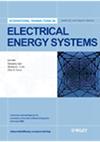Comparison of shuffled frog leaping algorithm and PSO in data clustering with constraint for grouping voltage control areas in power systems
引用次数: 6
Abstract
Voltage Control Areas (VCAs) play an important role in voltage stability assessment and control. Since it is impossible to detect VCAs in real time during appearance of emergency cases for large-scale power systems, it is a reasonable solution to train and employ an artificial intelligent system (AIS), for on-line predicting of VCAs. However, at different emergency and alert cases, there are various VCAs for power system. Clustering the data of Participation Factors (PFs) of all studied cases into a finite number of groups would lead to a more accurate ANN-based online VCA identifier. Each cluster has a representative center that is the critical VCA corresponding to all contingencies and load stresses which would lead to the same cases as the members of that cluster. In this paper a novel data clustering method based on shuffled frog leaping algorithm (SFLA) is presented for this purpose. In the first part of present study the general application of SFLA in data clustering is compared with PSO as the most popular Memetic Algorithm (MA), to demonstrate the validity of proposed clustering method. Consequently, as the clustering of VCAs is a problem with linear equality constraint, the compatibility of SFLA for solving under constraint clustering problems and its priority to PSO from this point of view, are shown in this study. Numerical results are presented at the first part for three standard test data sets and at the second part for IEEE 118-bus test system. Copyright © 2010 John Wiley & Sons, Ltd.电力系统电压控制区分组中有约束数据聚类的洗阵蛙跳算法与粒子群算法的比较
电压控制区(vca)在电压稳定评估和控制中起着重要作用。由于大型电力系统在突发事件发生时无法实时检测到vca,因此训练和使用人工智能系统(AIS)对vca进行在线预测是一种合理的解决方案。然而,在不同的应急和预警情况下,电力系统中存在不同的vca。将所有研究案例的参与因子(PFs)数据聚类到有限数量的组中可以得到更准确的基于人工神经网络的在线VCA标识。每个集群都有一个代表中心,该中心是对应于所有突发事件和负载压力的关键VCA,这些突发事件和负载压力会导致与集群成员相同的情况。本文提出了一种基于青蛙跳跃算法的数据聚类方法。在本研究的第一部分,将SFLA在数据聚类中的一般应用与最流行的模因算法PSO (MA)进行了比较,以证明所提出的聚类方法的有效性。因此,由于vca的聚类是一个具有线性等式约束的问题,从这个角度来看,本研究显示了SFLA在求解约束下聚类问题的兼容性以及它对PSO的优先性。第一部分给出了三个标准测试数据集的数值结果,第二部分给出了IEEE 118总线测试系统的数值结果。版权所有©2010 John Wiley & Sons, Ltd
本文章由计算机程序翻译,如有差异,请以英文原文为准。
求助全文
约1分钟内获得全文
求助全文

 求助内容:
求助内容: 应助结果提醒方式:
应助结果提醒方式:


